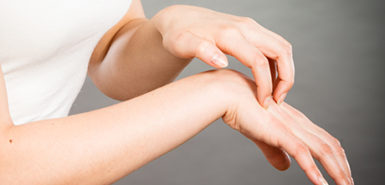
Labor. The mere mention of the word can conjure up many thoughts in a woman’s mind, ranging from excitement to anxiety to fear.
We’ve previously looked at some of the options available to help improve the labor experience for women, including music, breathing and use of a birth ball.
There are plenty of others, but have you ever heard of a TENS unit? It stands for Transcutaneous Electrical Nerve Stimulation—and it’s a great option because it comes without any known downsides for mom and baby.
The only thing I found in research is that moms with a history of epilepsy should not use the TENS unit.
What is it? The small unit can help women manage pain non-pharmacologically. The device has a base and electrodes that are placed on the back for labor. This option for pain control has been used for labor since the 1970s.
It has also been used for other types of pain. I’ve had patients tell me about relatives who used a TENS unit for back, knee and hip pain.
How it works
The device works by sending a pulse of electrical current through your body to your brain.
It works on the gate theory of pain, which describes how so-called gates can open or close based on the input. You can lower pain by allowing a different pain in the gate.
An example of this is when you might shake your finger or put it in your mouth after you hit it with a hammer. When you divert the pain, your body focuses on the other thing happening—the shaking of the hand.
Applying this to childbirth, we can see how the electrical current serves as a distraction from the labor, allowing the mom to feel more in control of her labor. The pulses help stimulate the release of endorphins and it can prevent pain pulses from reaching the brain.
The device itself connects to four electrical pads placed on the lower back. Once it’s activated, you would notice a tingling or buzzing sensation. You adjust the strength as you feel the need. I encourage moms to start on the lowest level and increase as desired.
The unit can be used throughout labor, although it may work best when used as early as possible in the labor process. As labor progresses, you can use another form of pain relief in addition to the TENS unit.
Relaxation options, such as movement, could also be used with the TENS unit.
Research organizations have conducted reviews of various studies on the TENS unit and concluded that units may very well help reduce pain during labor.
In some instances, researchers compared placebo groups to groups that used the TENS unit and found the latter more likely to want to use the unit in a future labor. Other studies showed moms had a lower pain rating when using the TENS unit on acupressure points. Notably, there were no concerns about the effects on the baby when using the TENS unit.
At the very least, the TENS unit could provide a distraction during labor, if not some pain control.
 /a>
/a>
 /a>
/a>
 /a>
/a>
I wore a TENS unit for my first labor in 1980, and that son is now 38 years old!! I was a P.T. working at Lawrence Memorial Hospital in Lawrence, KS, and was working with the early TENS units for back pain. Read about the application for labor and delivery, had opted for a “natural delivery”, provided my doctor some literature on this, and my doctor said, “Sure, you can try it”. The TENS certainly did help in the early stages of labor, and I like that it is still one option for women.
That’s awesome, Christine! Thanks for sharing. 🙂